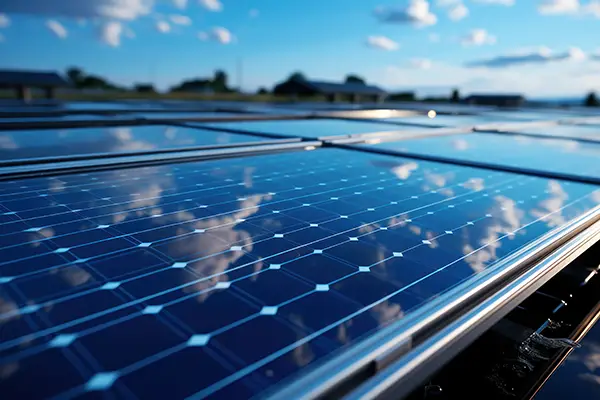What is Solar?
Solar, as described across multiple sources, pertains to anything related to, derived from, or caused by the sun. It encompasses a broad spectrum of definitions and applications, primarily focusing on the sun’s energy and its utilization. Electrical energy can be generated using photovoltaic (PV) panels or concentrated solar-thermal power (CSP) systems.
PV panels use the photovoltaic effect to convert light into an electric current, while CSP systems use mirrors or lenses to concentrate sunlight to extreme heat, which is then converted into electricity by a turbine. Solar energy technology is used in various applications, including electricity generation, industrial processes, and space heating. It is a renewable energy source that has the potential to satisfy all future energy needs if suitably harnessed
Here are the key aspects of what “solar” entails:
- Relation to the Sun: Solar phenomena, activities, or characteristics are those directly related to or caused by the sun. This includes natural occurrences and cycles determined by the sun.
- Solar Energy: This is the energy emitted by the sun, capable of producing heat, causing chemical reactions, or generating electricity. Solar energy is a clean, renewable resource that can be harnessed through various technologies to meet a wide range of human needs, from heating and electricity generation to chemical production.
- Solar Power Generation: Utilizing the sun’s rays, solar power can be produced or operated by the action of the sun’s light or heat. This involves converting solar radiation into thermal energy (heat) or electrical energy. Common devices for collecting solar energy include flat-plate collectors and photovoltaic cells. The former is used for solar heating applications, while the latter converts sunlight directly into electricity through the photovoltaic effect.
- Applications and Technologies: Solar energy supports a variety of applications, including solar water heaters, solar-powered electricity generation, and solar cooking. Technologies range from active solar technologies, which use electrical or mechanical devices for conversion (e.g., photovoltaics for electricity), to passive solar technologies that optimize the local climate for heating or cooling purposes without external devices.
- Environmental Impact: Solar energy is highlighted for its minimal environmental impact, as it does not require fuel to operate (after the initial construction and installation of solar technology equipment) and does not emit greenhouse gases or toxic materials. This makes it a key component in efforts to reduce human impact on the environment.
In summary, “solar” encompasses a wide range of concepts and applications all centered around the sun and its energy, highlighting its importance as a clean, renewable resource for a variety of uses, from electricity generation to environmental conservation






